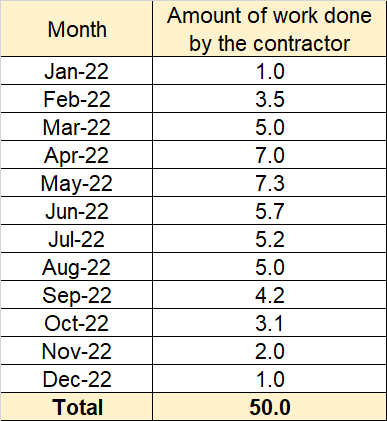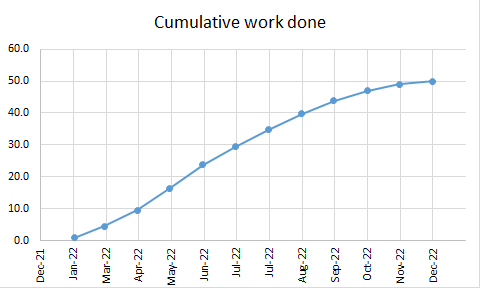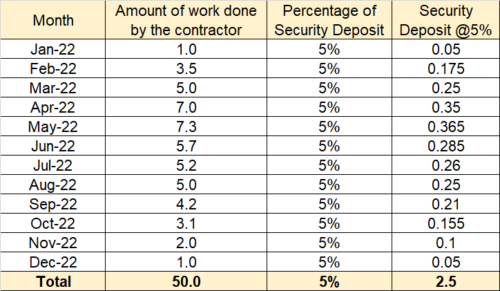Retention Money in a contract is a tool that the side that frames the contract uses to protect their risk in the contract. This is a part of the running account bill that the clients deduct on a regular interval that forms the security for them. It is called Retention Money as clients retains this amount from the payables of the contractors.
In case the contractors’ work involves any kind of re-work, corrections, or leftover job that they must do in order to complete the assigned work, and they leave the job without doing so, partially the retention money serves as the guarantee. The client may utilize the money deducted to complete the rectification works on behalf of the contractor.
Retention Money Percentage in Construction Contracts
The percentage of Retention Money is generally from 2.5% to 10% in a construction contract. The contract framers finalize this figure at the time of the tender notice. It’s important as the cash flow statement of the contractor is dependent on the percentage of such deductions.
The percentage of Retention Money in a Government tender generally varies from 2.5% to 5%. As per the tender clauses, employers will deduct the equivalent money from every running bill of the contractor. This amount will remain in the account of the client.
Read More: Difference between Mobilization advance and Secured advance
Release of Retention Amount Deducted
The terms of release of the retention money are variable as per the terms and conditions of construction contracts. In some contracts, employers release the whole amount of the retention money to the contractor on work completion. In some other contracts, the client releases the retention money partially. Say, 50% after the contractual scope of work is complete. The remaining after the Defect Liability Period (DLP).
In the case of a project where the scope of the contract includes the operation and maintenance by the contractor for a certain period, say 3-5 years, the retention amount is released after the maintenance period is over.
Calculation of Retention Money Amount
Let us consider the practical example of a contract of the value of $50 Mn. As per the contract, the retention money is 5%. The duration of the project is 12 months. The retention money will be released 50% after the project scope is complete, and the remaining after one year of the Defect Liability Period.
The contractor performs the work in line with the below table.
All amounts are in $ Mn.


Client deducts the retention money as per below table:

The accumulated value of the retention money as per the above table is $2.5 Mn. The release schedule of the retention money will be:
50%, i.e. $1.25 Mn will be released at the end of the work, that is, after December 2023. The remaining value will be released after 1 year of Defect Liability (DLP), that is, after December 2023.
How a Contractor Can Avoid Deduction of Retention Money in a Contract Costing?
Retention Money is negative cash flow for a contractor. Hence, they always tend to avoid it.
Some contracts define the scope of providing an alternative guarantee to the client in lieu of the deduction of the Retention Money in a tender. In those cases, the contractor has to provide the client with a bank guarantee or a corporate guarantee to cover the same risk supposed to be covered by the Retention Money. In case the contractor fails to do rectification or abandons the contract, the bank guarantee or the corporate guarantee serves as the security to the client.
Effect of an Alternative Retention Money Guarantee in Construction Contracts
If the contractor provides such an alternative guarantee, it will affect their cash flow positively if cash retention doesn’t exist. There is some commission to the bank guarantees that the contractor needs to pay to the bank. But in any way, it is much lesser than the amount of cash Retention Money amount in a contract.
There are contracts with no such clause to provide any such alternative guarantee, and cash retention is prevailing. Still the contractor has the opportunity to approach the client to propose such alternative guarantees.
Difference between Earnest Money Deposit (EMD) and Retention Money (RM) in a Contract Costing
Earnest Money Deposit or EMD is a security contractors submit along with a tender as a guarantee to the bid he has submitted. This amount secures the bid till the award of the contract, and usually refunded to all the tenderers after the award of the contract. For the successful bidders, employers usually adjusts this amount with the Retention Money in the tender. Sometimes they return these amounts directly to the tenderers and deducts Retention Money from running account bills of the contractors as per relevant tender clause.
On the other hand, Retention Money is applicable only to the successful tenderers. This is effective on award of the work and eventual completion of the work. Hence, it is by nature different from the Earnest Money Deposit or EMD.
If you have a question you may ask it in the comment box. We assure to get back to you.

Thank you for your articles. They are very helpful to me. Can you help me with something?
Thanks for posting. I really enjoyed reading it, especially because it addressed my problem. It helped me a lot and I hope it will help others too.
May I have information on the topic of your article?
Thank you for sharing this article with me. It helped me a lot and I love it.
Good web site! I truly love how it is easy on my eyes and the data are well written. I am wondering how I could be notified whenever a new post has been made. I’ve subscribed to your RSS which must do the trick! Have a nice day!
Thank you for your articles. I find them very helpful. Could you help me with something?
You helped me a lot with this post. I love the subject and I hope you continue to write excellent articles like this.
Thank you for writing this article. I appreciate the subject too.
Someone necessarily help to make severely articles I might state. This is the very first time I frequented your web page and so far? I surprised with the research you made to create this particular put up amazing. Fantastic task!
I real delighted to find this web site on bing, just what I was searching for : D also bookmarked.
Great write-up, I am normal visitor of one’s website, maintain up the nice operate, and It’s going to be a regular visitor for a lengthy time.